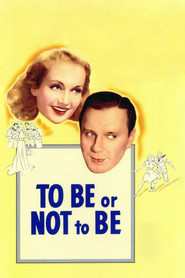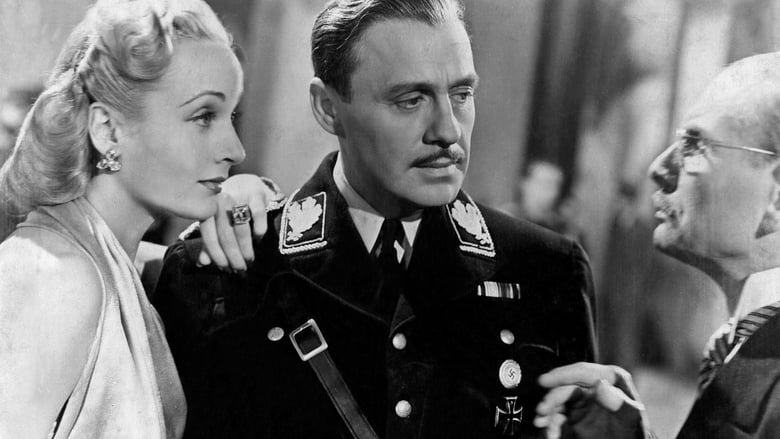“To Be or Not to Be 1942” is a black comedy about a theater company in Nazi-occupied Poland. The troupe becomes involved in espionage and must use their acting skills to outwit the Nazis. A hilarious and suspenseful masterpiece, it cleverly blends humor with danger. With plot twists that keep you on the edge of your seat, this film is a rollercoaster ride of emotions.

CLICK HERE🠇🠇🠇🎞️_Watch To Be or Not to Be 1942 English Subtitles_
Review
In the midst of war and Nazi propaganda, director Ernst Lubitsch created a bold and daring film: To Be or Not to Be. Set in Poland during World War II, this satirical comedy follows the escapades of a theater troupe as they attempt to foil a Nazi spy ring.
Released in 1942, To Be or Not to Be was met with mixed reactions from audiences and critics alike. Some praised the film’s clever writing and biting humor, while others criticized its seemingly insensitive portrayal of the Holocaust.
At its heart, To Be or Not to Be is a film about identity and deception. The main character, Joseph Tura (played by Jack Benny), is a vain yet talented actor who finds himself at the center of a dangerous game of espionage. Alongside his wife Maria (Carole Lombard), Tura must use his acting skills to outsmart the Nazis and protect his fellow Poles.
One of the most memorable scenes in the film occurs when Tura impersonates a high-ranking Nazi officer in order to infiltrate their headquarters. As he tries to bluff his way past suspicious guards, he delivers the famous line: “What he did for Shakespeare, we are now doing for Poland.”
Despite its controversial subject matter, To Be or Not to Be was a critical success upon its release. Many praised Lubitsch’s deft direction and sharp scriptwriting, which managed to balance comedic wit with searing social commentary.
The film also boasts an impressive cast of actors, many of whom were seasoned veterans of Hollywood’s Golden Age. Lombard’s electrifying performance as Maria earned her widespread acclaim, while Benny’s nuanced portrayal of Tura cemented him as one of Hollywood’s most versatile comedians.
To Be or Not to Be also made waves for its use of music and sound effects. The film opens with a rousing rendition of “The Polish Cavalry,” which sets the tone for its irreverent yet deeply patriotic message. Additionally, the sound design features a number of clever tricks, such as the use of a ticking clock to heighten tension during pivotal scenes.
Despite its initial success, To Be or Not to Be would later be criticized for its seemingly trivial treatment of the Holocaust. Some felt that the film’s comedic tone belittled the suffering of those affected by Nazi atrocities, while others argued that it was simply too soon to make light of such a devastating tragedy.
However, Lubitsch always maintained that his goal was not to create a flippant comedy, but rather a work of art that could shed light on the absurdity and evil of war. In this respect, To Be or Not to Be remains a bold and daring film that continues to spark debate and discussion today.
Technical Data

- Runtime : 99
- Release : 1942-03-05
- Genre : Comedy, War
- Cast : Carole Lombard as Maria Tura, Jack Benny as Joseph Tura, Robert Stack as Lieut. Stanislav Sobinski, Felix Bressart as Greenberg, Lionel Atwill as Rawitch
- Crew : Ernst Lubitsch as Director, Ernst Lubitsch as Producer, Ernst Lubitsch as Author, Edwin Justus Mayer as Screenplay, Alexander Korda as Producer
- Popularity 10.318
- Budget : $1,200,000
- Revenue : $1,500,000
- Company : United Artists
- Summary : During the Nazi occupation of Poland, an acting troupe becomes embroiled in a Polish soldier’s efforts to track down a German spy.
- Tagline : Hollywood’s Happiest Star in the Picture You Must Not Miss!
